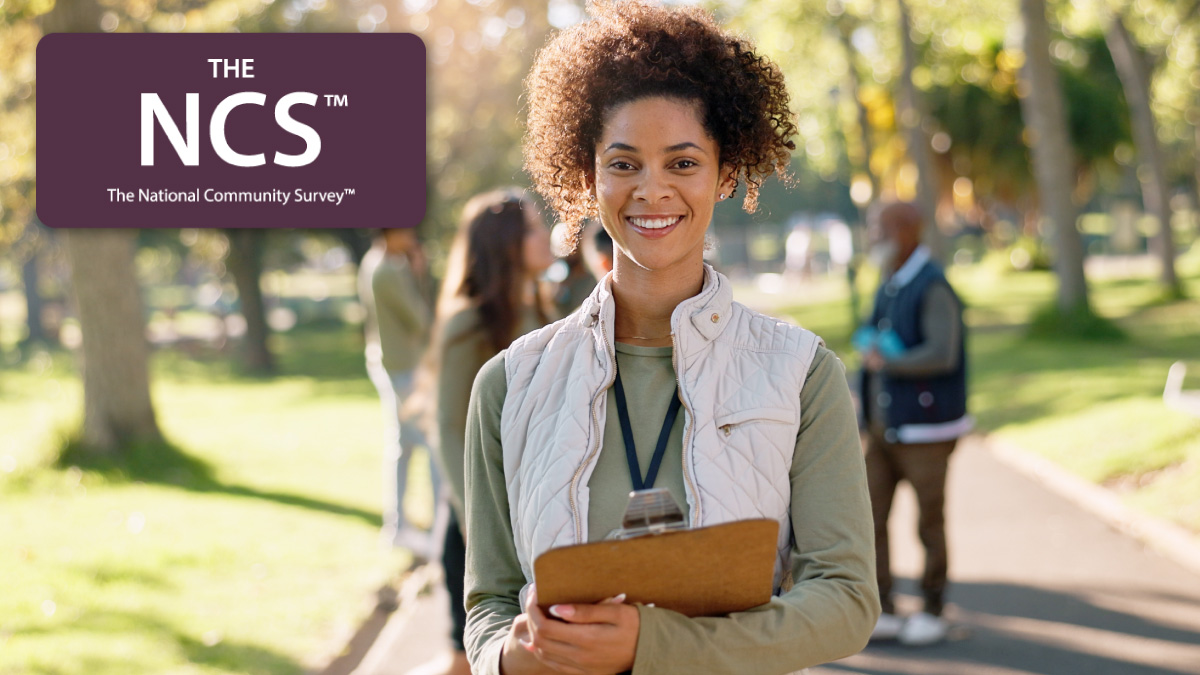Today's Top Ten Community Needs According to US Residents
By Polco on February 21, 2023

New technology, remote work-life, the pandemic, the climate, an aging demographic, and other strong forces have changed communities around the United States. Does that mean resident priorities have changed, too?

In Polco's latest webinar, Michelle Kobayashi, Polco's Principal Research Strategist, and Matt Fulton, Polco's VP of National Engagement, count down the top 10 community priorities according to residents. The data comes from over 30 years of survey research.
Brianna Sunryd, Director of Communications and Civic Innovation and community participation for the Town of Amherst, Massachusetts, shares how their local government uses community input to address some of these top needs.
The Top 10 Community Priorities
10. Aging in Place
As adults age, they require better access to health care, suitable housing, access to activities, and much more. The older demographic is growing, which is partially why aging in place has become a top priority for residents.
Polco's Community Assessment for Older Adults (CASOA) captures resident opinion from older residents. Results show 8 in 10 older adults plan to retire where they are currently living. Communities that support aging in place now will be better prepared for an older population in the future.
9. Health and Wellness
The National Community Survey (The NCS) measures resident opinions on livability in their city or town. The NCS shows most people rate their communities high for fitness and recreation opportunities. However, results show a need for better access to quality food, affordable quality health care, mental health care, and preventative services.
8. Natural Environment
Kobayashi said the natural environment has been a central concern nationally and internationally. But new technology and trends like blue and green infrastructure (incorporating water, plants, grass, and trees into building plans) and 15-minute cities (communities with access to necessities within 15 minutes) help maintain the natural environment.
The NCS data show 8 in 10 residents rate air quality positively, and about 7 in 10 rate water resources positively. Around 6 in 10 rate the preservation of natural areas, cleanliness, and open space positively.
7. Education
Education approval hovered around 70% positive on The NCS for many years. Ratings plummeted after the pandemic. Many initially thought the drop might have been temporary due to remote learning during Covid, but the trend continued into 2022, making education more of a priority for many residents.
6. Land Use
The NCS ratings for land use often score low. Only about 5 in 10 residents approve of growth planning in their neighborhoods, 4 in 10 feel positive about residential and commercial growth, and 3 in 10 approve of the availability of affordable housing. But Kobayashi says land use decisions are where governments have the most control and offers the most opportunity.
5. Public Trust
Trust in local government went up during the pandemic; residents gained more appreciation for public services during the crisis. But over the past two years, trust ratings fell significantly, largely due to the spread of misinformation and polarization.
“Local government operates based on trust between residents and those servicing the communities. It’s difficult to build and so easy to lose,” Fulton said.
4. Infrastructure
Results from The NCS and the ARPA Engagement Package, which asks residents and businesses where relief funds should be put to best use, show that communities and local governments are both highly concerned with infrastructure.
The top three infrastructure priorities include drinking water, roads and bridges, and road safety. Access to reliable broadband also became a top concern post-pandemic.
3. Safety
Safety will always be a top priority. In fact, it is often the number one priority. But there is a downward trend in feelings of safety, from around 8 in 10 to 7 in 10. Law enforcement’s reputation has not fully recovered after 2020 and the George Floyd protests, which may have influenced the drop.
The National Law Enforcement Survey (The NLES) by Polco measures resident opinions toward police and sheriff services. The NLES shows the most important safety issues in 2022 included drug abuse, DUIs, traffic problems, burglaries, theft and robberies, and domestic violence.
2. Community
More people are interested in community and solidarity as a response to polarization, Kobaysahi says.
On the positive end, The NCS shows about 7 in 10 residents rank connection and engagement with their community and making residents feel welcome positively.
About 6 in 10 feel positively about valuing, attracting, and openness towards people of diverse backgrounds, and fostering a sense of civic and community pride.
1. Economic Health
Both residents and businesses say economic health is their top priority. Kobayashi says this is because people are uncertain about the future.
Typically, employment opportunities, cost of living, well-planned community growth, and downtown vibrancy traditionally rate low on The NCS. But these low ratings offer an opportunity for improvement. Working on partnerships, and stronger relationships with the chamber of commerce can strengthen the local economy and create resilience.

Amherst Uses Community Engagement to Address Top Community Needs
The Town of Amherst, Massachusetts, prioritizes community engagement in government planning.
 Brianna Sunryd, Director of Communications and Civic Innovation and Community Participation Officer, shared three examples of how the Town incorporated resident feedback in projects that address the top needs of today.
Brianna Sunryd, Director of Communications and Civic Innovation and Community Participation Officer, shared three examples of how the Town incorporated resident feedback in projects that address the top needs of today.
The Town wanted input on the future use of 150 acres of Town-owned land. The project addressed top needs such as land use, natural environment, and health and wellness.
The Town blended online and in-person meetings to gather feedback and determined residents mostly wanted walking trails, housing, and natural habitats in the area.
Amherst also asked residents for feedback on a policy decision on age and dementia-friendly communities. Sunryd said the policy applies to almost all top needs, such as the economy and infrastructure, but especially aging in place. While the Town is still in the process of creating an action plan, they used community input to inform that plan.
Finally, Town officials asked community members how they prefer to engage in political and social issues.
Amherst learned that most of their residents are interested in alternate ways to participate and better outreach. They started communicating on Instagram since many college students in the area said they used the platform. Officials also discovered that many residents read the local paper, so they now hold weekly press meetings and connect more with local journalists.
The online engagement allows the Town of Amherst to connect to more residents from diverse backgrounds. They are trying to hear from a broader range of perspectives.
“We’ve heard from many different voices in the past few years because of our expansion for online engagement,” she said. “It’s important to define early what your promise is to the public when you are seeking their feedback, especially in Amherst where only the H is silent. We have a very opinionated and active community.”
Related Articles:
Popular posts
Sign-up for Updates
You May Also Like
These Related Stories

What If You Knew The Questions That Could Change Everything for Your Community

Top Ten Articles of 2020 by Polco / National Research Center


